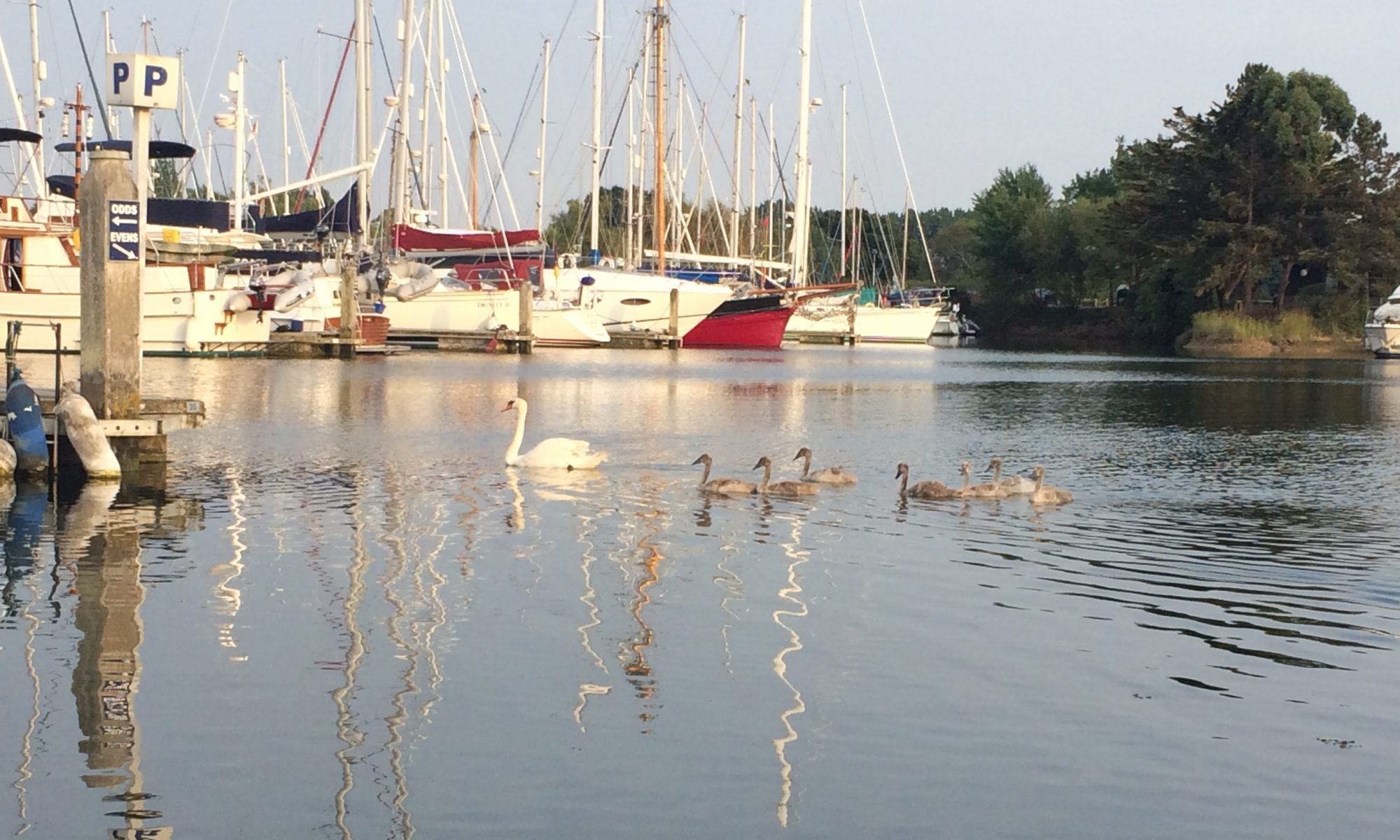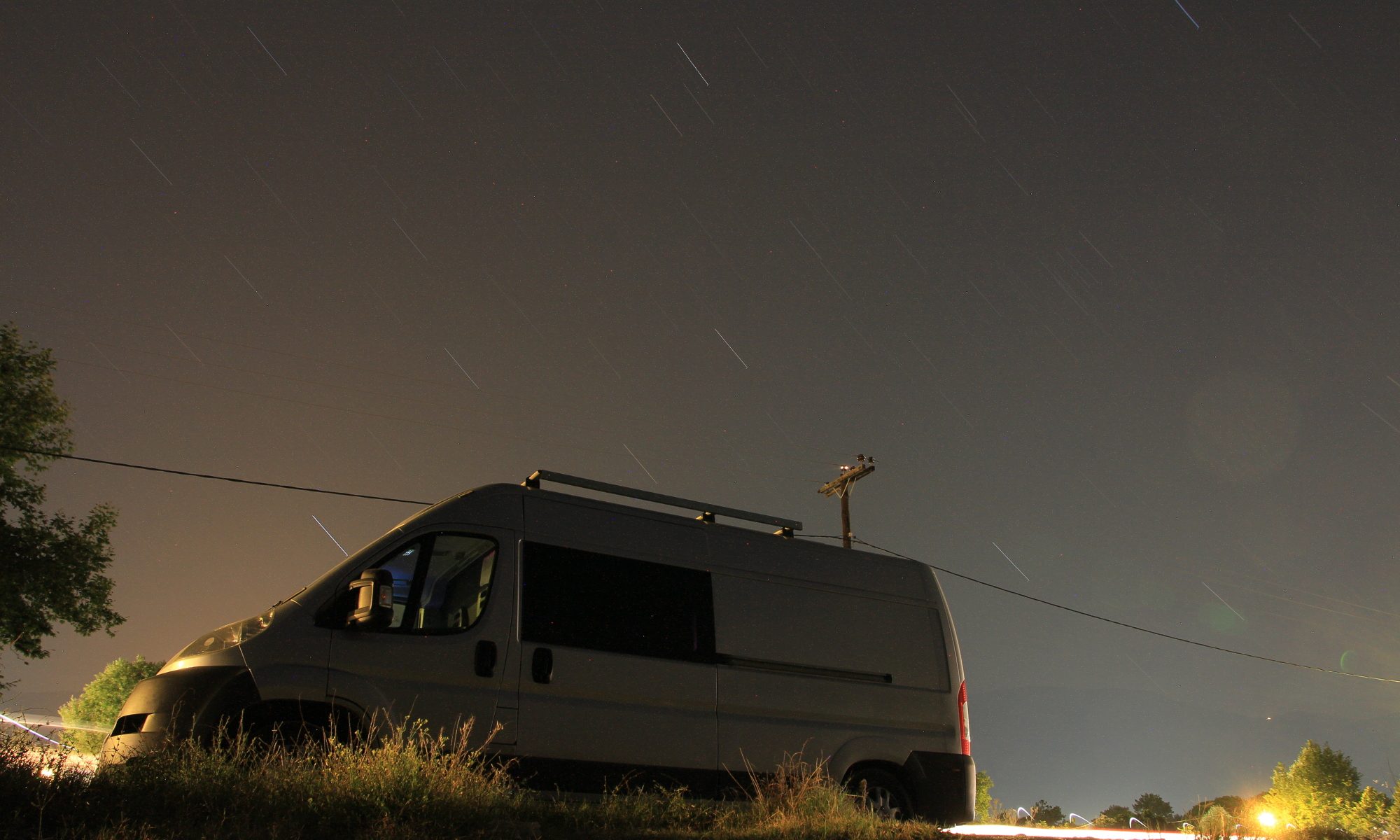Planning a Motorhome Road Trip: Introduction
Whatever kind of holiday you like, it will always involve a degree of planning. Planning a Motorhome Road Trip is no different!
This guide offers tips and tricks through first hand experience gained whilst travelling in Gadget2 throughout Europe. It aims to make the process of planning a motorhome road trip as straightforward as possible.
Planning a Motorhome Road Trip: Why a Motorhome?
Many people’s idea of a good holiday is to book a week in a nice hotel. Here they can fully unwind and relax, all in and around the same location. Indeed, many people choose to do the same in their motorhome. Many choose to drive to a specific campsite where they intend to stay for a week. Here they may set up their own camp outside the van including awnings, tables, chairs, barbecues, etc.
Whilst this can be really enjoyable, you are very much limited in the range of interesting places to visit. Furthermore, hotel and campsite costs can soon add up and become a major proportion of the holiday budget.
A Road Trip however is a very different type of holiday! Each day will most likely be spent in a different location. Consequently, it can be more stressful as there is not always a chance to stop and relax for an extended period of time. For this reason, a Road Trip is not for everyone!
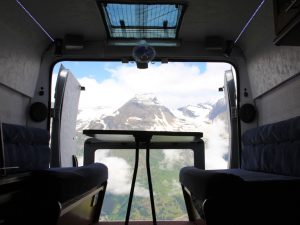
If you are prepared to be a little adventurous and are not worried about knowing where you will spend each night, then a Road Trip is definitely for you!
The sense of freedom is exciting, knowing that you always have the safety and familiarity of the motorhome with you throughout the adventure.
Planning a road trip should be a fun experience, not a chore. To ensure it is fun, it is important to plan to plan! Leave yourself loads of time and don’t try to do it all in one go.

Planning a Motorhome Road Trip: Time and Budget.
The two things to consider first are Budget and time available.
Your budget will need to cover the fuel, food, campsites, attractions, insurance both vehicle and travel, ferries, breakdown cover. You will undoubtedly also find unforeseen extras including repair of the vehicle. This sounds daunting, however a spreadsheet and some time for planning can give a pretty clear idea of the costs and save any nasty surprises down the road.
Remember that if you are prepared to stay away from campsites, the cost of the trip does not necessarily have to increase along with the length of stay! Many European countries have camper stops in interesting locations. Furthermore, many of these are free (or a few Euros at most!).
Work out how much time you have for your Road Trip. This will form the basis for planning the distance you want to travel and therefore what you will be able to see.
Planning a Motorhome Road Trip: Optimising your Budget.
Once you have a time scale and budget, It is worth calculating the running costs of the vehicle. Gadget2 has a 2200 Turbo Diesel engine and a long running average of 30mpg. At the time of writing, fuel cost £5.92 per UK Gallon, equating to a fuel cost of £0.20 per mile. Obviously, this does not take into account the wear and tear of the vehicle.
Remember also that prices will increase during peak season. If you are travelling off season, consider buying an inexpensive ACSI Camping Card. This will give you access to lower rates at over 3000 European Campsites. Things such as national park entry, museums and other attractions also tend to have higher peak season prices. Consequently, it is worth checking the prices as well as dates of local holidays before you set off. Sometimes this may work to your advantage as you may find local festivals and activities to get involved in.
If travelling in the winter, remember to factor in the cost of heating during the cold months. An inexpensive diesel heater available from Amazon for around £100 is well worth the investment.
Book the return channel crossing as soon as possible to take advantage of lower costs. Travel and breakdown insurance can be booked at the same time. These costs can be subtracted from the Budget to give a clearer idea of the remaining amount to spend whilst away.
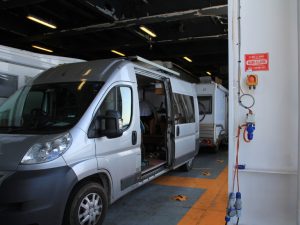
Planning a Motorhome Road Trip: First Steps
Once you have identified how long you have to travel and a budget, it is time to start the fun bit of planning!
There is loads of information available to help figure out exactly where you want to go. Books, friends, Facebook groups, Pinterest, Instagram and blogs to name a few. The problem is knowing which sites are actually worth a visit and which books are worth buying.
Dedicate a few evenings to researching what you want to see. Open a blank text document and start listing the points of interest for each region or country you want to visit. In addition, try adding some images to act as quick reminders later on.
There are numerous websites that can help give ideas of places to visit. One really useful site is www.atlasobscura.com. This is a commercial website through which you can buy experiences, however it also has lots of places of interest (most of which are a bit different to your standard attractions) and descriptions.

However, if computers aren’t your thing, then a pencil and paper plus a visit to the library will have you well on your way.
A firm favourite series of books for tourists are the Lonely Planet Guides. The Lonely Planet Europe Guide gives a good overview of each European Country including many popular destinations. However, as with any book covering a large geographic region, it is only able to give a limited overview of each country. Consequently, it should not be your only reference for planning a road trip. Top Tip! Buy a pack of post-it notes and highlight places that you want to go, this book can then remain with you on your travels and form a useful reference.
Planning a Motorhome Road Trip: Next Steps
After you have completed the initial research, write down a list of the must-see locations. Obtain a map and plot these locations onto it. Alternatively, an online mapping tool such as Google My-maps allows the plotting of these locations. Furthermore, it is possible to automatically plan a route taking these locations into account.
After a few short evenings, you now have the basis of a motorhome road trip route!
Planning a Motorhome Road Trip: Detailed Route Planning
Once you have a map, list or spreadsheet that forms the basis of a route it is time to consider the detailed information. Consequently you will need to deliberate on things such as how much time you want to spend driving each day versus doing an activity.
Route planning goes hand in hand with budget considerations, as the time spent driving can double if you are avoiding using toll roads. Keep a close eye on the mileage totals and toll road usage. And regularly check your remaining budget.
If your route requires large amounts of driving, there will be a balance of things you will be able to see and things that you will drive past.
Consider planning the odd day on which you will cover a large distance. For example, if you need to travel 700 miles in 5 days, then it may be sensible to have one full day of driving 450 miles. This will then give you 4 full days with only 1 hour driving per day.
Alternatively, you may prefer to spread the distance equally giving 140 miles per day. In this situation aim to visit a number of places along the route. By doing so, the mileage will become less of a chore, and more part of the days experience. Furthermore, if you choose to avoid the motorways, you will be rewarded with a more varied route and get to see places away from the tourist hotspots. For a more authentic experience, try stopping at rural cafes and shops too.
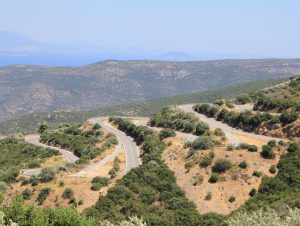
Remember, you don’t necessarily have to drive hundreds of miles to see some amazing places!
Finally, plot on the map the approximate locations of where you intend to stop for the night.
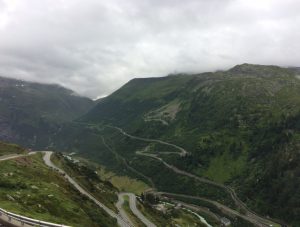
The main advantage of a road trip in a motorhome is that you always have your home with you! Your bed, food and clothing is travelling with you all the time.
Deciding on where to stay each night can be concluded well in advance or worked out during the day.
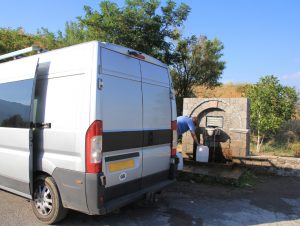
One option is wild-camping. There is plenty of advice on wild-camping available online. If you are planning on parking your vehicle at the side of the road and sleeping there, then it’s worth checking out the local laws before you do so. Rules and regulations vary from place to place. Wild-camping can provide a huge amount of flexibility, however, there are drawbacks as you will not be able to behave in the same way as a campsite.
Some places have dedicated ‘Camper-stops’. These are common throughout much of Europe, although less common in the UK. Aree di Sosta, Aires and Stellplatz are alternative names for official camper-stops. At these locations, it is possible to stay for a few nights for free or a few Euro’s at most. Furthermore, many have services such as waste water emptying, fresh water supply and electricity.
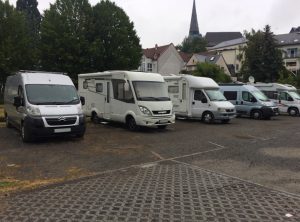
When deciding where to park up, Apps such as campercontact and park4night are a great way to find places where others have stayed and what they thought. It is worth remembering that most suggested locations on such apps are uploaded by individual users and are not always up to date. Always check local signs to ensure that you are indeed allowed to stay!
Planning a Motorhome Road Trip: Campsites
Most camper stops do not allow users to set up camp and all activities must take place within the vehicle. Consequently, awnings, tables and chairs, external water tanks may be prohibited. Always check local regulations before deciding to stay.
If you intend to fully relax, start a BBQ or have a few drinks sitting outside the vehicle, then camper stops may not be suitable. Luckily, there are numerous small campsites around Europe that often enable allow these activities. These range from fully serviced pitches with fancy showers and facilities all the way down to a farmer’s field with a cold water tap! The latter often offer a quiet setting in rural areas and are well worth considering, especially if you have a fully equipped motorhome.
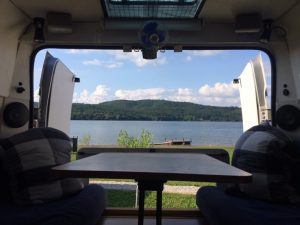
Campsites can be booked ahead of your trip. This usually rewards lower prices and reduced stress during the trip. The main drawback is that it restricts changes to the route whilst away. You may prefer to use an app such as Pitchup to book sites whilst away. It is often possible to book up to the day of arrival
The internet and mobile apps are not always the be all and end all for researching where to stay. Indeed, sometimes you will come across sites which are only advertised locally but are absolute gems!
Planning a Motorhome Road Trip: Driving and Road Charges
It is important to remember that in the UK, vehicle tax allows you to drive without restriction on most roads including the motorway network. Unfortunately this is not the case throughout much of Europe.
Some European countries allow road users to drive freely on local roads, while charging per section of motorway driven in the form of Tolls. These can add up and become a significant cost.
Other countries allow road users to drive freely on local roads but require the user to purchase a Vignette for unlimited driving on Motorways. These vary in time and cost and typically range from 1 day up to a year.
Finally, some countries require the user to buy a vignette to drive on any road. It is normally possible to buy online before entering the country. Alternatively, they can be bought at the border crossing.
If you are going to be transiting borders on your road trip, is worth checking what the tolls or road charges will be before travel. Consequently, miscommunications or expensive surprises can be avoided! The RAC website is an invaluable resource for driving information about European Countries and also give information on tolls as well as speed limits and local laws.
In addition to road charges, many European Countries require extra documentation for you and your vehicle. Again, the RAC website provides up to date information on these requirements. For example, some countries require a green card which you will have to request from your insurance provider. An international driving permit is sometimes required and easily obtained from larger Post Offices. It is a good idea to print insurance certificates as well as taking the vehicles V5 as these are often required.
Planning a Motorhome Road Trip: Equipment
If you are planning an extended road trip, it is worth spending some time writing a list of things to take. Two columns is best – essentials and desirables. The essentials include clothing, medication, paperwork and vehicle equipment. Depending on the design of the vehicle, this may include cooking equipment, water, toilet chemicals, etc.
Many European countries have legal requirements for items which must be present in the vehicle. These can include a fire extinguisher, warning triangles, several spare bulb kits, first aid kit, high visibility jackets (which must be easily accessible for each passenger). Even if you describe yourself as a non-drinker, it is still sometimes a legal requirement to carry two handheld breathalysers. Remember that failure to present these items can lead to a fine. It is important to check the local laws and requirements before you travel.
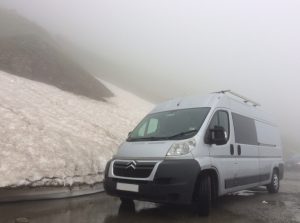
Remember, it is a lot cheaper to buy all the equipment you need for your trip on eBay or Amazon rather than discovering you need something once you get to a border crossing!
Once all of the essential items are packed, move on the the desirables list. The desirables are all the extras such as drones, cameras, kayaks, skis, etc! Order these in their importance for the trip and only take things if there is enough room and weight capacity.
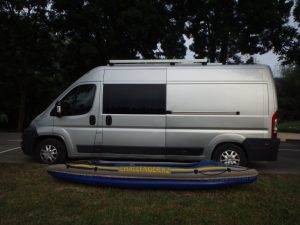
Planning a Motorhome Road Trip: Conclusion
Remember, planning a road trip should be a fun and exciting experience. Good luck in your planning, and just remember you can be as flexible as you want on the road but it does pay dividends to spend some time considering everything you might need!
Start off with the essentials such as documents, equipment, insurance and ferry bookings. Only once these are sorted should you move on to the finer details such as researching specific activities or places to eat!
By leaving enough time, planning can be broken down into manageable chunks, and quickly you will find yourself with a solid plan!
If you have 5 weeks to spare, consider a trip to Greece! Find out how we spent 5 weeks travelling 5085 miles through 14 countries.
If you don’t yet own a motorhome, consider building one! Its great fun, find out how I designed and built Gadget2.
Copyright. © 2020 Van and boat. All rights reserved.
